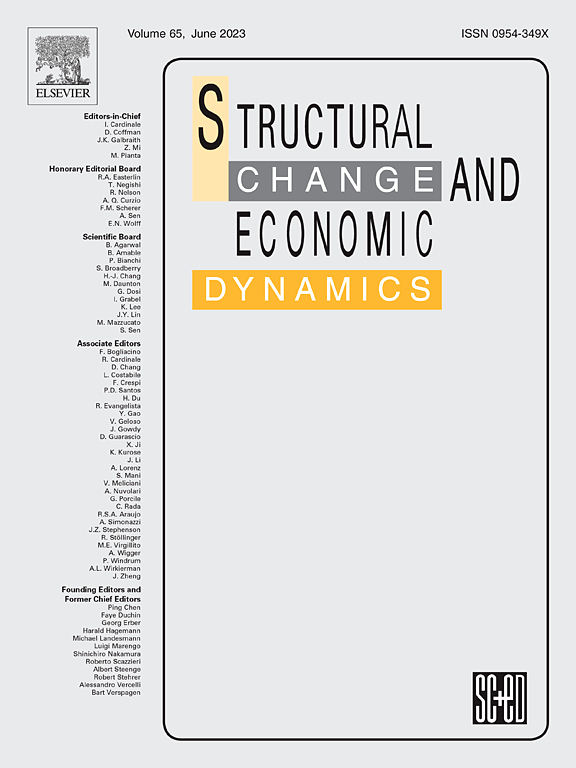Drivers of income inequality in OECD countries: Testing the Milanovic's TOP hypothesis
IF 5.5
2区 经济学
Q1 ECONOMICS
引用次数: 0
Abstract
This paper studies the drivers of rising income inequality in OECD countries between 1980 and 2018. By testing Milanovic’s TOP hypothesis in our sample, we measure the extent to which these distributional outcomes have been driven by either technological progress or globalization and the extent to which they have been influenced or mitigated by policy choices. The results of our empirical analysis provide the basis for confirming the TOP hypothesis. We find evidence that a 10 percent increase in trade openness, financial globalization, and technological progress is on average associated with a 0.4 percent, 0.3 percent, and 0.9 percent change in market inequality, respectively. At the same time, policies such as public expenditure on education, employment protection legislation and direct income taxes promote a more equal distribution. Our most notable finding, however, is that policies not only have a direct equalizing effect, but also mitigate the effects of globalization and technological progress on income inequality. The results of our study suggest that there are reasonable alternatives to anti-globalization strategies and that redistributive and labor market policies can be tailored to control inequality in the era of globalization and technology.
经合组织国家收入不平等的驱动因素:检验米兰诺维奇的TOP假设
本文研究了1980年至2018年间经合组织国家收入不平等加剧的驱动因素。通过在我们的样本中检验米兰诺维奇的TOP假设,我们衡量了这些分配结果受到技术进步或全球化驱动的程度,以及政策选择对其影响或缓解的程度。本文的实证分析结果为TOP假设的验证提供了依据。我们发现有证据表明,贸易开放、金融全球化和技术进步每增加10%,市场不平等的平均变化幅度分别为0.4%、0.3%和0.9%。与此同时,诸如教育公共支出、就业保护立法和直接所得税等政策促进了更公平的分配。然而,我们最值得注意的发现是,政策不仅具有直接的均衡效应,而且还缓解了全球化和技术进步对收入不平等的影响。我们的研究结果表明,在全球化和技术时代,有合理的替代反全球化战略,可以定制再分配和劳动力市场政策来控制不平等。
本文章由计算机程序翻译,如有差异,请以英文原文为准。
求助全文
约1分钟内获得全文
求助全文
来源期刊

Structural Change and Economic Dynamics
ECONOMICS-
CiteScore
9.60
自引率
4.90%
发文量
159
期刊介绍:
Structural Change and Economic Dynamics publishes articles about theoretical, applied and methodological aspects of structural change in economic systems. The journal publishes work analysing dynamics and structural breaks in economic, technological, behavioural and institutional patterns.
 求助内容:
求助内容: 应助结果提醒方式:
应助结果提醒方式:


